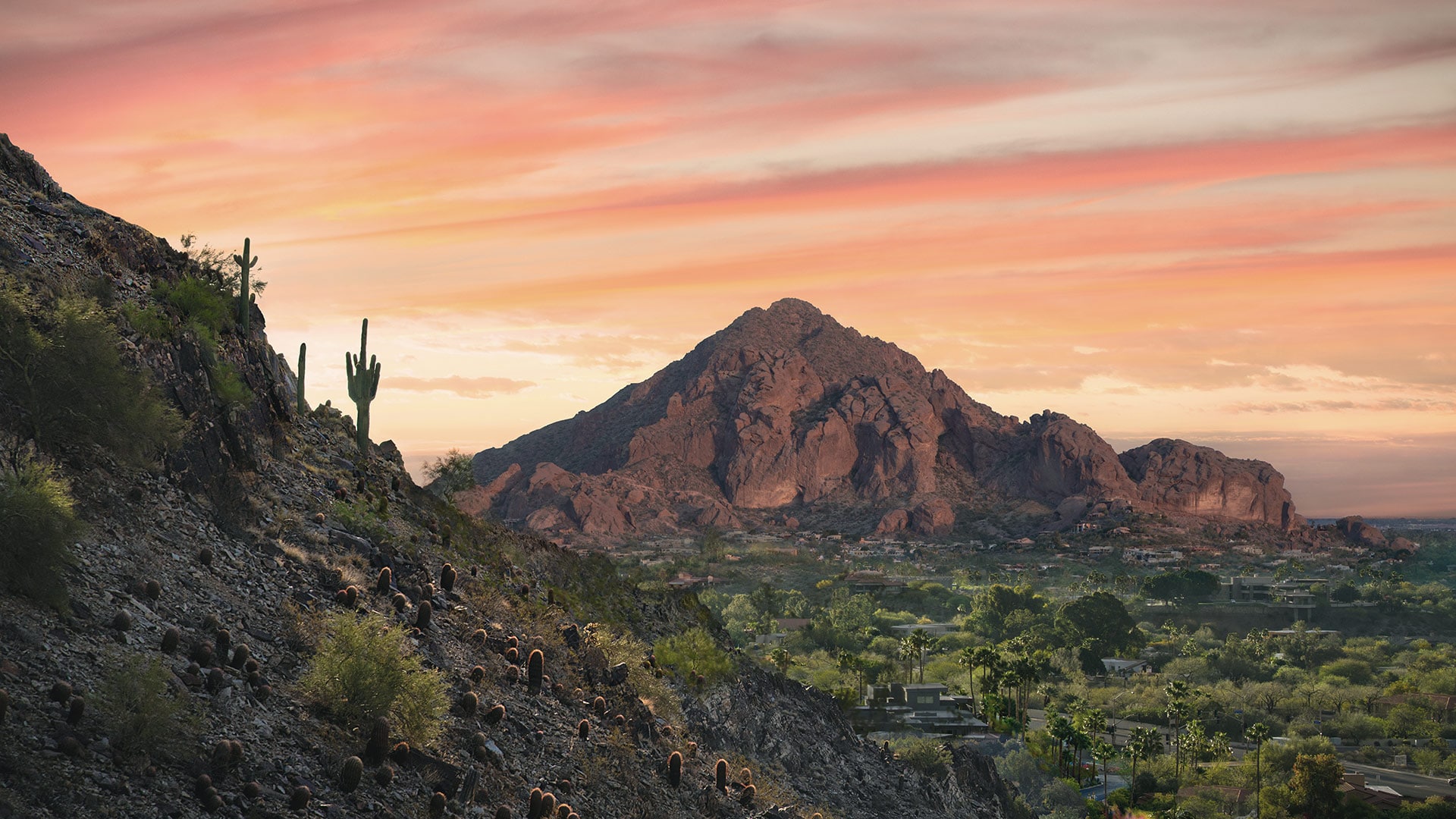Hiking Camelback Mountain in Arizona is such a popular activity that during winter and spring, it’s hard to find parking at the trailhead. If vacation for you means going vertical, the mountain’s climbing routes offer an alternative way to experience this Phoenix landmark.
On Belay
You can choose from more than 25 bolted routes around the mountain. The Praying Monk, a red sandstone formation reached from Echo Canyon Trail, is a local classic that ascends about 80 feet. With a 5.6 rating, it’s accessible to moderately experienced climbers. The rock’s southeast face draws morning sun, so go early before it heats up too much.
If you have advanced skills and technical expertise, visit the Headwall, just down from the Praying Monk, to tackle grueling Cameltoe, rated 5.11b/c. Nearby Gargoyle Wall offers other challenging routes, like the 5.9+, three-pitch Aerial Combat, which takes you up 240 feet.
Climate Tips
During monsoon season, which starts in July, watch local weather forecasts before you embark on a Camelback Mountain hike. Stay off the mountain if rain or thunder are predicted and wait at least a day after rain to climb.
Head out early, preferably just before or at sunrise. Not only can you avoid extreme heat, but you have a better chance of finding parking at Echo Canyon trailhead. And as any smart climber knows, bring at least a half-gallon of water and sunscreen.
Cactus Attacks on Camelback Mountain
Among the variety of cacti growing on Camelback are jumping chollas, also called teddy bear chollas. Don’t be fooled by their fuzzy appearance. If you barely brush this silvery cactus, spines “jump” and embed themselves in your skin. They can be extremely painful and need to be extracted individually. The best way to remove them is using tweezers.
Other Hazardous Fauna
Despite its urban location, Camelback Mountain in Phoenix is filled with beautiful but potentially dangerous critters. Know what to watch for, and stay alert.
You might see Gila monsters, lizards sporting bead-like orange and black markings. Their bites are venomous, although rarely fatal to people, and they sometimes chew before letting go. Fortunately, they’re shy and won’t usually bite unless they feel threatened.
This is rattlesnake country, so don’t be surprised if you spot a Western diamondback crossing the trail. They stretch across rocks to soak up sun, but during hotter hours, you can also find them coiled in shady nooks beneath rocks. Look before you put your hands and feet down, and listen for the buzz of their rattles warning you to stay away.
Another hazard you might not expect are bees. Watch for hives and swarms, and if you spot either, choose a different route. If you’re attacked, run if you can; otherwise, cover your head and call for help.
Camelback Mountain isn’t a playground. However, with a little common sense and a few safety precautions, you can savor the hours you spend hiking its rock faces.



